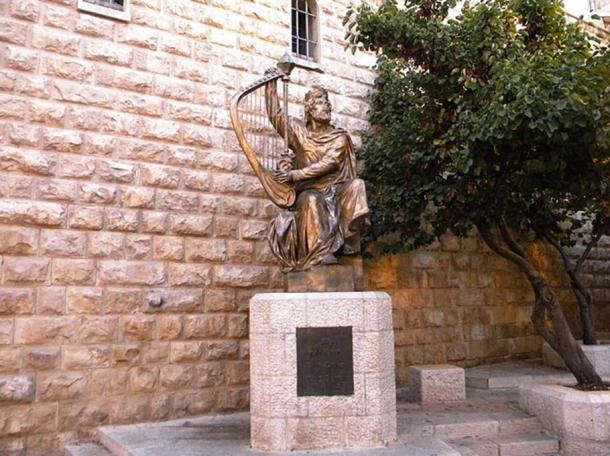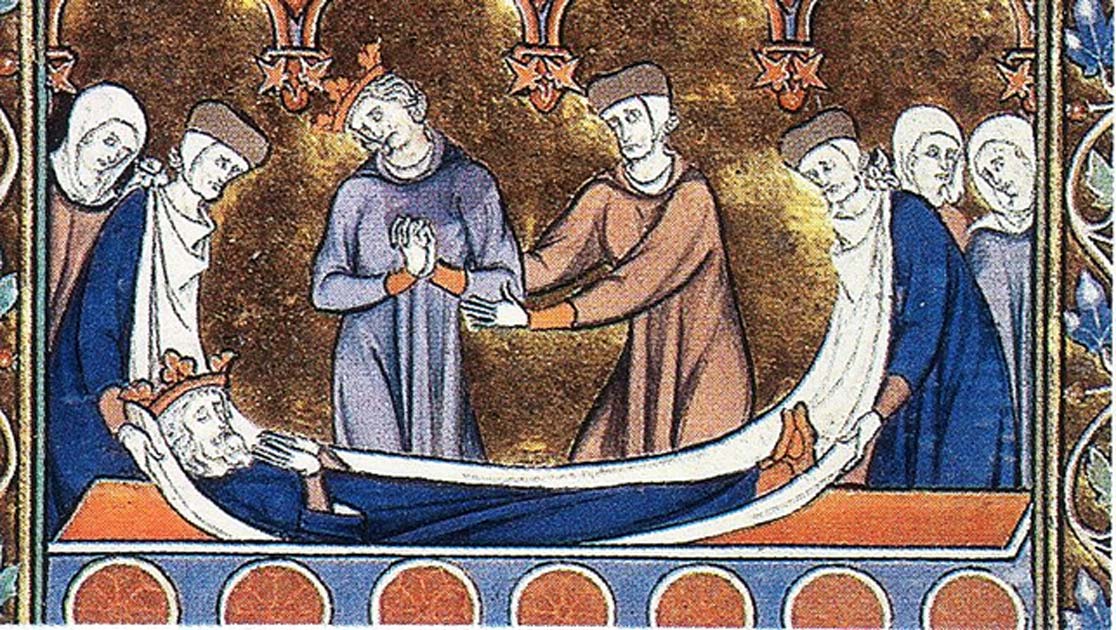A Question of Faith: Is the Tomb of the Legendary King David Really on Mount Zion?
There is a famous tomb located on Mount Zion in the ancient city of Jerusalem. A part of the Diaspora Yeshiva, this tomb receives thousands of visitors every year. Many of them go to the site with the belief that the bones of the legendary King David are held within it, although there is no archaeological proof that the ancient king is laid to rest there. This tomb is one of Israel’s most valued treasures.
In the 4th century AD, the place now known as the Diaspora Yeshiva was identified as the Cenacle of Jesus. It was a key site for the Christian faith. However, it seems that the tomb of David is more valued symbolically than proven by archaeological evidence. After centuries of research and attempts to find the remains of the ancient king, the famous site still has more questions than answers.

The tomb of King David on Mount Zion. (Public Domain)
A Tomb for Two Cities and Cultures
The tomb on Mount Zion became widely-recognized as a site related to King David during the 12th century. That was when religious tourism started to gain popularity once again. Although legends suggest that it is a tomb for the king of Israel, records from the 4th century AD said that his burial, along with that of his father Jesse, could be found in Bethlehem. It seems that there was a mistake made during the medieval period with the translation discussing David’s burial site in the Book of Samuel.
- Has the legendary citadel captured by King David been found?
- King Solomon’s Mines Discovered: Kings and Pharaohs - Part I
- Name from Davidic era found inscribed on 3,000-year-old vessel

David and Saul (1878) by Ernst Josephson. The two met in the Book of Samuel. (Public Domain)
Therefore, two biblical cities have been suggested to hold the remains of the famous king within their walls. The key to the real location of his remains may be located at Mount Zion. However, the authenticity of this tomb has been disputed for many decades.
The Cult of An Ancient King
To many Christian and Jewish pilgrims, it doesn't matter much if the Mount Zion tomb is the real final resting place of the King of Israel. The only thing that really matters to them is its symbolic power and the unique bonds created amongst people who come from every part of the world to worship the memory of David near the Hagia Maria Sion Abbey in Jerusalem.
Several chapters of the Bible make mention to David being one of Jesus’ relatives. Some of these include: Matthew 1:1-17, Mark 10:46-48, Timothy 2:8, Revelation 22:16, Romans 1:1-4, 2 and Luke 3:23-38. To provide one example in detail, according to Luke:
''23 Jesus was about thirty years old when he began his work. He was the son (as was thought) of Joseph son of Heli,
24 son of Matthat, son of Levi, son of Melchi, son of Jannai, son of Joseph,
25 son of Mattathias, son of Amos, son of Nahum, son of Esli, son of Naggai,
26 son of Maath, son of Mattathias, son of Semein, son of Josech, son of Joda,
27 son of Joanan, son of Rhesa, son of Zerubbabel, son of Shealtiel, son of Neri,
28 son of Melchi, son of Addi, son of Cosam, son of Elmadam, son of Er,
29 son of Joshua, son of Eliezer, son of Jorim, son of Matthat, son of Levi,
30 son of Simeon, son of Judah, son of Joseph, son of Jonam, son of Eliakim,
31 son of Melea, son of Menna, son of Mattatha, son of Nathan, son of David,
32 son of Jesse, son of Obed, son of Boaz, son of Sala, son of Nahshon,
33 son of Amminadab, son of Admin, son of Arni, son of Hezron, son of Perez, son of Judah,
34 son of Jacob, son of Isaac, son of Abraham, son of Terah, son of Nahor,
35 son of Serug, son of Reu, son of Peleg, son of Eber, son of Shelah,
36 son of Cainan, son of Arphaxad, son of Shem, son of Noah, son of Lamech,
37 son of Methuselah, son of Enoch, son of Jared, son of Mahalaleel, son of Cainan,
38 son of Enos, son of Seth, son of Adam, son of God.''
Due to this information, David reached a high position in the group of important figures for both Christianity and Judaism.

King David in Prayer. (1635-1640) By Pieter de Grebber. (Public Domain)
Ottoman and Later Interests
The appearance of the tomb during the 16th century had nothing in common with the modern building. When the city became a part of the Ottoman Empire, those living in the local Franciscan Monastery began to experience difficulties. In 1525, Suleiman the Magnificent decided to expel the Franciscans from the complex because of the importance of the site. Instead of allowing Franciscans to cultivate their religion, he decided to build an Islamic shrine to outshine it.
- Could 3,000 Year-Old Royal Building be King David's Palace?
- The Royal Road of the King of the World, and the Ancient Center of the Earth
- Parting the Waters of the City of Jerusalem in the Siloam Tunnel of King Hezekiah

Mt. Zion - the location of Nabi Da'ud mosque, King David's proposed tomb, the Cenacle, and an old Franciscan church. (c. 1870) (Public Domain)
In 2012, a team of archaeologists located numerous Islamic tiles at the site dated back to the 17th century. It is known that the site was important for Muslims in the 16th and 17th centuries due to its special history and the common belief that it was where King David was buried. Jesus is an important prophet of Islam, so the site linked to David was attractive not only for applying Islam as a religion in these lands, but also due to the king’s connections to the sultans’ religion as well.

A statue of King David outside his tomb on Mount Zion. (CC BY SA 4.0)
The cavern has never been excavated, so disputes about who may be buried in the tomb of David remain unsolved. Regardless of that issue, King David is a hero of legendary stories and his heroic acts are believed to be true by thousands of people around the world. Few who visit his tomb worry if it is his exact burial place. What matters more to them is their faith and the strong need to feel a powerful connection to the ancient king.

The cenotaph of David Tomb at Zion; Jerusalem. (CC BY SA 3.0)
Top Image: King David is lowered into a tomb while his son Solomon watches. From a medieval manuscript. Source: CC BY SA 3.0
References:
King David's Traditional Tomb, available at: http://www.centuryone.org/davtomb.html
King David's Tomb, available at: http://www.biblewalks.com/Sites/DavidTomb.html
Tomb of King David, available at: http://www.seetheholyland.net/tomb-of-king-david/
Jerusalem Archaeological Sites: King David's Tomb, available at: http://www.jewishvirtuallibrary.org/jsource/Archaeology/Davids_Tomb.html
















